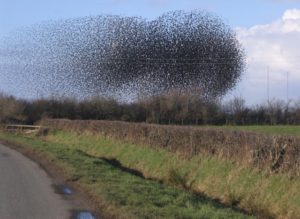 Animals around the world have different periods of the day when they are the most active. Some animals are more active during the daylight hours and sleep during the night. Many animals are nocturnal. They spent the evening awake and then go to sleep when the sun is ready to come up.
Animals around the world have different periods of the day when they are the most active. Some animals are more active during the daylight hours and sleep during the night. Many animals are nocturnal. They spent the evening awake and then go to sleep when the sun is ready to come up.
Something is happening among animal populations that is upsetting scientists. They are finding that many animals that were once active during the day are transitioning to a nocturnal pattern. This change to a nocturnal existence isn’t just occurring in one or two places, scientists are seeing this pattern around the world in every type of habitat.
Scientists believe that the reason that these animals are changing their behaviors is because the human species is becoming more pervasive across the planet. Humans are disrupting more areas of animal habitat. This often draws animals closer to humans. However, wild animals do not want to interact with humans, so they are waiting until the night to come out and engage in the necessities of their lives.
The shift to a nocturnal existence is causing scientists to see some animals shift what they eat. For instance, coyotes in California have started to eat fewer squirrels and birds as these animals are bucking the trend and staying active during the day. Coyotes who are becoming more nocturnal are eating more mice, rats and rabbits. Scientists believe that dietary shifts like those seen in the coyote populations may have an impact on some species that could cause a loss in numbers and possible extinction.
In order to halt this disruption in animal behavior patterns, scientists are recommending that some parts of current animal habitat be made into areas that humans are not allowed to enter. This would be especially important during the breeding season. Scientists also believe that in other areas like parks, the hours in which humans are allowed might need to be curbed to be less of a disruption to animals.
Scientists are still assessing all of the impacts that this global shift in animal behavior will have on animals and on humans. They hope that whatever the findings, more people will consider how human activity impacts the lives of the animals that live all around us.


